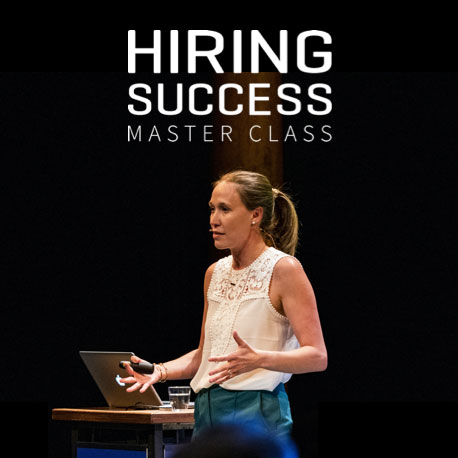The fundamental requirements for onboarding are the same for remote hires as office-based. Great people need empowering to deliver the impact you hired them for, wherever they work from.
Table of Contents
But the ground has shifted. Even businesses with long-established, best-in-class onboarding programs have had to race to adapt, as COVID’s forced remote working into the foreground. It’s not just that the mechanisms of onboarding have changed – switching from face-to-face to Zoom conversations, for example, and getting laptops sent to remote offices. It’s that remote employees face different pressures and have different priorities to office-based workers.
As part of a successful talent retention strategy, remote onboarding must adapt to maximize value from the people you’ve invested in hiring. After all, a strong onboarding experience can boost your Net Hiring Score (NHS). Our team at Enboarder has worked with some of the most innovative, people-first businesses in the world and we’ve found three main principles that set great remote onboarding apart:
Social connection is more important than ever

Helping new hires feel socially accepted has always been a key factor in successful onboarding. But for remote-first companies that’s much harder to replicate. It’s a point that was raised often in our recent panel discussion on experience-driven remote onboarding. Jenn Perry, Onboarding Logistics Manager for Shopify, said “creating a connection and a sense of belonging are the most important things you can do right now with a remote workforce”.
It’s too easy to fall into the trap where remote employees only get together to talk about active projects, but that completely removes the informal element of onboarding that’s vital to forming social connections. In practice, we’re seeing businesses embrace ideas like:
- Virtual coffee breaks and exercise classes. The idea is to replicate your usual in-house social offering virtually, so new hires have plenty of opportunity to connect outside formal work projects. Align virtual social events to your culture. Do you normally have office drinks on Fridays? How about setting up a virtual cocktail making class and posting the ingredients to everyone instead, for instance.
- Rotating new hires with different virtual buddies. Cisco Meraki have started this fantastic initiative called ‘three-on-three lunches’, where they connect new hires for lunch with two other people they might not otherwise have interacted with. The point is to make sure your new hires aren’t just connecting with their team but forming bonds across the business.
- Creating Slack channels for new hires. Pre-start is ideal (you don’t need to share anything confidential!) so your new starters can start getting to know one another. You might find it helpful to assign a new hire rep to the channel to act as facilitator. Best-practice onboarding should start before day one anyway – as the period between signing and start date is a huge danger zone for dropouts. (And there’s nothing more frustrating for the recruitment team who’ve worked so hard to this point).
- Delivering (and discussing) ice-breaker questionnaires. Breaking the ice happens naturally in an in-person setting – it’s the ‘how was your weekend?’ and ‘that looks great – what are you eating?’ conversations that spring up organically. They don’t happen as easily remotely – and it’s much easier for new hires to sink silently into the background. Codifying icebreaking in some way makes sure those casual conversations still happen.
Creating a connection and a sense of belonging are the most important things you can do right now with a remote workforce
Jenn Perry, Onboarding Logistics Manager for Shopify
Upskill managers

Managers are the biggest influencers in your business. At least 75% of voluntary turnover can be influenced by managers, and talented managers drive 48% higher profit than average managers. That’s especially true during the onboarding process when new hires are almost totally dependent on their manager. In a sense, the manager is the gatekeeper. Which means a bad early manager relationship can curdle long-term success.
The fact that managers are make-or-break to successful onboarding isn’t news to most forward-thinking organizations. But however fantastic your managers are normally, they probably need some extra support to deliver great remote-first onboarding. 88% of remote workers say they struggle with inconsistent working practices and miscommunication. Those issues are vastly exacerbated for new hires who’re already anxious and don’t yet know the ropes. Our COVID EX research backed that up, identifying a major chasm opening between managers and remote teams. That’s a potential disaster for onboarding.
For most managers, managing a remote workforce is an entirely new skill. As HR leaders we need to equip managers to overcome those challenges, or risk new hires plummeting into confusion and inconsistency. In practice, we’re seeing these ideas work well:
- Scheduling regular all-hands management meetings. Enable managers to connect, share best practices, challenges and ideas to better support new hires. Setting up a Slack channel for everyone involved with onboarding also typically works well.
- Arranging relevant training. For example, some managers may need tech training so they’re familiar with how your remote communication tools work. Or training on how to spot burnout (a real concern given that employees in the US are working three hours longer every day remotely). Or training on how to communicate with empathy without the normal non-verbal cues you’d get face-to-face.
- Circulating clear rules. Uncertainty in managers will breed uncertainty in new hires. Be explicit about your new programs and policies. How should new hires dress? When’s lunch? When are they expected to be on Slack? Time and again we see that managers are responsible for setting team culture. If you don’t want new hires to work all-hours, train your managers not to.
- Scaling-up leadership coaching. Managers need active coaching to develop the skills to best support their teams – and most especially right now, as remote working is still so new for most, at least at this scale. Make sure managers are being actively coached to evolve.
Create trust

A recent study found under 35s are facing a confidence crisis at work at the moment. Nearly half said they feel unable to ask for emotional support when they need it. Your new hires – typically more preoccupied with making a good impression and lacking an established colleague support network – are even more susceptible. This is a major factor that can impact talent retention, which is critical to business performance.
Our research shows HR has the biggest opportunity to impact the workforce and drive employee engagement during transition moments, where employee vulnerability is highest. Onboarding is the most powerful of those moments, where employees record the highest levels of vulnerability. Even more so right now, when extreme change is likely to increase anxiety and vulnerability levels even further. Creating trust is table stakes for effective remote onboarding. In practice, that typically looks like:
- Mandating regular check-ins. “From great conversations comes amplified trust, which increases the effectiveness of feedback”, Gallup say. All three onboarding experts involved with our panel discussion talked about the importance of scheduling check-ins. Managers should ideally be catching up with new hires every day, even for five minutes, from both a wellbeing and performance perspective.
- Re-evaluating training. Josh Bersin gave the keynote at our quarterly EDGE event recently, on the future of HR in a post-COVID world. Learning was one of eight major impact areas he identified, saying HR leaders must focus on urgently upskilling the workforce as roles evolve. Training is likely already an important part of your onboarding but is it still fit-for-purpose? New starters must trust you’re equipping them with the right tools to navigate this remote-first world.
- Treating new hires as individuals. The move to remote-first working drives an emphasis on technology and “reinforces pre-existing trends” towards digital transformation. It’s critical the personal, empathetic and human isn’t lost within that. Personalisation is a critical part of best-practice remote onboarding. We absolutely love Shopify’s postcard program, for example, which sees new hires get a handwritten, hand-decorated welcome postcard.
- Increasing transparent communication from the top. In 2009, SHRM reported that only 49% of employees trust senior management and only 28% believe CEOs are a credible source of information. Organizational trust has been abysmal long before COVID – but a crisis only exacerbates the issue. Remote onboarding should focus on building trust from day one by increasing communication from the senior leadership team.
Onboarding maximizes value from the people you hire, equipping them to thrive wherever they work. For businesses that are looking to achieve Hiring Success, it’s worth getting onboarding right – whether you’re onboarding remotely just for now or going remote-first for the long-haul.

 Enroll in the Master Class & earn 6 SHRM credits
Enroll in the Master Class & earn 6 SHRM credits